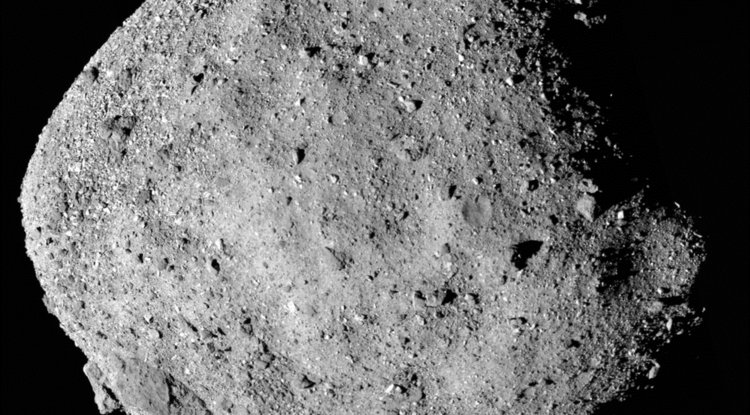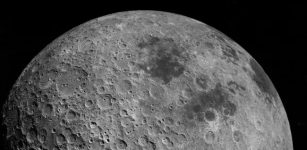Water On Asteroid Bennu – Discovered
MessageToEagle.com – From August through early December, the OSIRIS-REx spacecraft traveled the last 1.4 million miles (2.2 million km) of its outbound journey to arrive at a spot 12 miles (19 km) from Bennu on Dec. 3.
The spacecraft made its first observations of Bennu and the science obtained from these initial observations confirmed many of the mission team’s ground-based observations of Bennu and revealed several new surprises.

The OSIRIS-REx instruments reveal the presence of molecules that contain oxygen and hydrogen atoms bonded together, known as “hydroxyls.” The team suspects that these hydroxyl groups exist globally across the asteroid in water-bearing clay minerals, meaning that at some point, the rocky material interacted with water.
While Bennu itself is too small to have ever hosted liquid water, the finding does indicate that liquid water was present at some time on Bennu’s parent body, a much larger asteroid.
“This finding may provide an important link between what we think happened in space with asteroids like Bennu and what we see in the meteorites that scientists study in the lab,” Ellen Howell, senior research scientist at the UA’s Lunar and Planetary Laboratory (LPL) and a member of the mission’s spectral analysis group, said in a press release.
“It is very exciting to see these hydrated minerals distributed across Bennu’s surface, because it suggests they are an intrinsic part of Bennu’s composition, not just sprinkled on its surface by an impactor.”
“The presence of hydrated minerals across the asteroid confirms that Bennu, a remnant from early in the formation of the solar system, is an excellent specimen for the OSIRIS-REx mission to study the composition of primitive volatiles and organics,” said Amy Simon, OVIRS Deputy Instrument Scientist at NASA Goddard Space Flight Center.
Additionally, data obtained from the OSIRIS-REx Camera Suite (OCAMS) confirm that the original model—developed in 2013 by OSIRIS-REx Science Team Chief Michael Nolan, now based at LPL, and collaborators—closely predicted the asteroid’s actual shape.
Bennu’s diameter, rotation rate, inclination and overall shape presented almost exactly as projected.
“Radar observations don’t give us any information about colors or brightness of the object, so it is really interesting to see the asteroid up close through the eyes of OSIRIS-REx,” Nolan said.
“As we are getting more details, we are figuring out where the craters and boulders are, and we were very pleasantly surprised that virtually every little bump we saw in our radar image back then is actually really there.”
The mission team used this ground-based Bennu model when designing the OSIRIS-REx mission. The accuracy of the model means that the mission, spacecraft, and planned observations were appropriately designed for the tasks ahead at Bennu.
As expected, the surface of Bennu is a mix of very rocky, boulder-filled regions and a few relatively smooth regions that lack boulders.
However, the quantity of boulders on the surface is higher than was expected.
“Our initial data show that the team picked the right asteroid as the target of the OSIRIS-REx mission. We have not discovered any insurmountable issues at Bennu so far,” said Dante Lauretta, OSIRIS-REx principal investigator and professor of planetary science and cosmochemistry at LPL.
“The spacecraft is healthy and the science instruments are working better than required. It is time now for our adventure to begin.”
MessageToEagle.com










